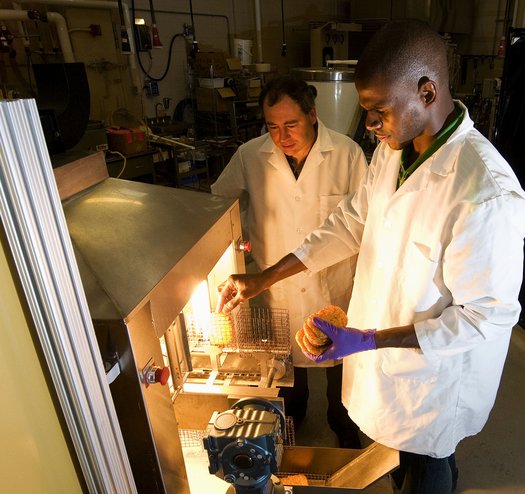|
For the past two days, New York has endured freezing temperatures and relentless blizzard. Instead of pouting indoors, perhaps it is better to maintain a positive outlook and appreciate the ethereal allure of snowflakes.
Snowflakes are formed when supercooled cloud droplets crystalize. About 10^18 water molecules are arranged to form a snowflake so it is rare for two snowflakes to look exactly the same. Temperature, humidity, and the way the snowflake falls from the sky affect the patterns of the ice lattice. Snowflakes thrive in humid, subzero environments. Water molecules attach to the surface of the crystalized droplets, dry to form ice, and slowly grow to a few millimeters in size. Ice particles branch out into common hexagonal or dendritic shapes. Snowflakes tend to be flat because it more more difficult of molecules to attach to the smooth surfaces of the snowflake than the jagged sides. The snowflakes grow symmetrically but sometimes clump together to form aggregates of several centimeters. The largest snowflake recorded is 15 inches and was spotted in 1887 in Fort Keogh, Montana. Even though the snowstorm is roaring outside, we can still be memorized by the unique beauty of snowflakes. To find out more, visit http://www.scientificamerican.com/article.cfm?id=why-do-snowflakes-crystal. ~HW
0 Comments
The young larval stages of the swallowtail butterfly now look more like bird droppings than a caterpillar with their intricate brown-and-white color pattern on their bodies. The older caterpillars blend in with leaves more easily, making the swallowtail butterfly extremely hard to be eaten by birds looking for a feast. Recently, scientists located the juvenile hormone responsible for these highly favorable color-pattern switches. By evolving this complex camouflage strategy of first mimicking bird droppings and then switching to blend in with leaves, these caterpillars have been able to escape the mouths of birds everywhere. After completing thorough testing, it has been determined that a change from an increase in the juvenile hormone to a decrease in the same hormone has induced these color switches and this form of regulation may be frequently present in insect larval stages.
-LW If you live in the southern United States or the Caribbean, you have most likely seen dust coating your cars during the summer. This dust originates in African deserts and is carried over the Atlantic Ocean. Recent studies done near the arctic introduce results similar to these patterns of traveling dust, possibly due to the decrease in glacial mass (or increase in “glacial outwash deposits”), according to Joseph Prospero from the University of Miami. Prospero’s previous body of work has led him to establish an initial hypothesis of high correlation between dust particles in Barbados (West Indies) to rainfall levels in the Sahel and Soudan regions of Africa, though at this point in his research he has not determined a clear association between the two factors due to unpredictability in yearly dust levels in Africa.
These studies on migrating dust particles are especially relevant to us living in the United States due to health concerns. The dust from African deserts contains over 50% dust particles with masses less than 2.5 microns, which the U.S. Environmental Protection Agency deems “respirable.” Dust particles in the Caribbean region often match or extend beyond these “respirable” levels. -GTB Worried about the latest dangers of elevated levels of saturated fats? We can worry a bit less with the development of the radiant fryer by food scientist Kevin Keener, at Purdue University. Keener has invented a fryer that can fry foods without the extreme excess of oils not uncommon in most fryers.
How does this miracle fryer work? Approximately 100,000 watts per square meter of infrared heat energy are applied to foods that already have some level of oil in them, like hash browns, through 10-12 infrared emitters with different wavelengths. These differences in wavelengths can cook both the inside and the outside of foods based on a simple turn of the dial controlling the emitter settings. This miracle fryer, through an exciting alternative to less healthier fryers today, does have a drawback: large foods, such as a whole turkey, cannot be fried with this invention. Keener recognizes that “You can literally throw anything in hot oil — a turkey, a Snickers bar, you name it and it will fry it. With this system, it really needs to be a formed product, something that is portion-sized so we have control over the geometry and the composition.” Interested in more wacky but practical inventions by Keener? Check out his “in-bag ozonation method” that is purported to remove harmful entities in food, such as E. coli or salmonella. -GTB |
Categories
All
Archives
April 2024
|

